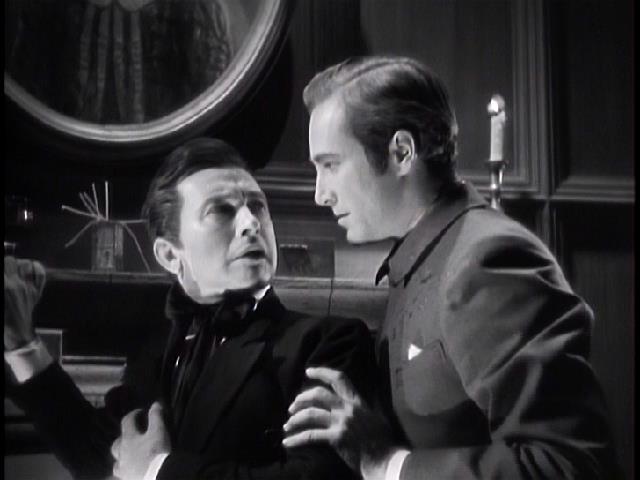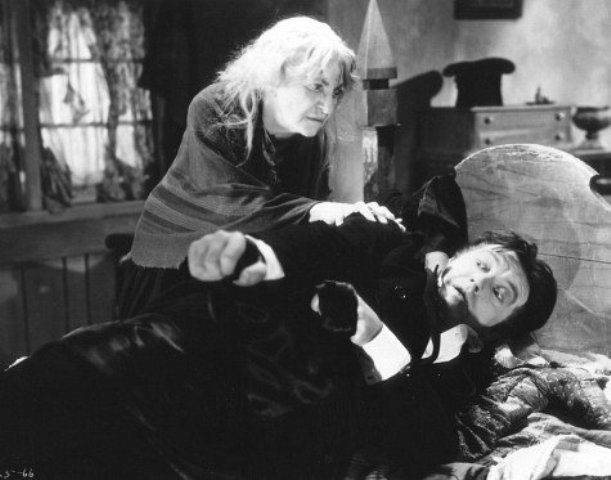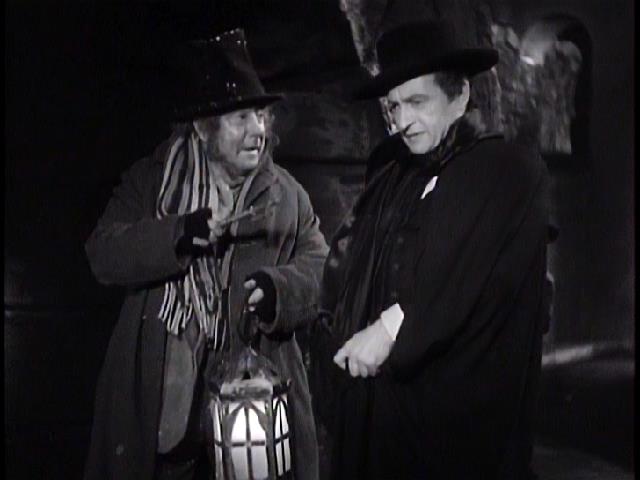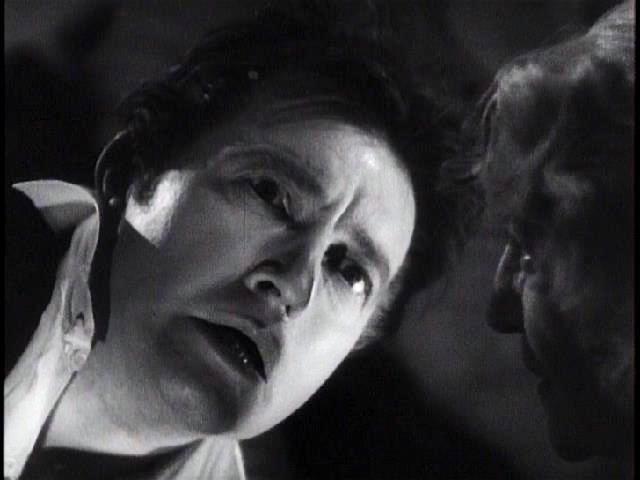There is so much that is good — sometimes close to great — in Stuart Walker’s Mystery of Edwin Drood (1935) that it’s a shame that it isn’t better known than it is. The problem, of course, is that it’s only nor’ by nor’west a horror film — and horror movies are, unfortunately, the primary items of perceived commercial value in Universal’s classic era holdings. (At this point, the studio has put out two VHS, one laserdisc, and no less than four packagings, remasterings, restored, etc. of Dracula.) Back in the days of a smattering of TV channels — when Shock Theater reigned supreme on the late show — it was more available than it has been in the last 20 years. But then TV stations were desperate for anything that even hinted at classic — and sometimes not so classic — horror, and the kids watching these shows never seemed to mind. It doesn’t help that even when it was new, the studio couldn’t seem to decide just what it was — a high-toned literary adaptation, a blood-and-thunder mystery, or a psychological horror picture. The fact is that it’s a little of all three — which is kind of fitting, since much the same criticism can be levelled at a great many of Charles Dickens’ books.
Compounding matters, the film — despite retaining the “mystery” title — never leaves any serious room for debate as concerns its mystery. We know whodunit and we virtually know how very early on. Instead of a traditional mystery what the movie gives us is a question of how John Jasper’s guilt will be proved so that it will clear Neville Landless (Douglas Montgomery) of the charge of having murdered Edwin Drood (David Manners). This actually works pretty well, since the depiction of the tormented opium-addicted, outwardly respected choir master John Jasper makes for sufficiently compelling gothic horror as he sinks further and further into a combination of mental disintegration and desperaton. That Jasper is played by Claude Rains helps immensely, of course, but he is not quite the whole show.
The atmosphere generated by director Stuart Walker accounts for much. Even working on largely familiar Universal standing sets, Walker creates a separate — and admirably Dickensian — world for the film. Oh, sure, we know that we’ve been down in those crypts before and that the basics of the town are Universal’s European village, but they look and feel different here. He’s helped immeasurably by a first-rate score from the undervalued Edward Ward (who did the music for the 1943 Phantom of the Opera). But the rest of cast is noteworthy, too.
Not the least of these is David Manners as the ill-fated title character. Often dismissed as nothing more than a good-looking — often ineffectual –hero in movies like Dracula (1931), The Mummy (1932), and The Black Cat (1934), Manners never really liked film acting all that much. He came into it almost by accident when James Whale cast him in Journey’s End (1930) and never quite took to it. Here — on the verge of leaving the business and not saddled with the romantic lead — Manners gives one of his most relaxed and appealing performances. The slightly stiff — and too-old-for-her-18-years — Valerie Hobson is largely wasted in the film, while romantic leads Douglass Montgomery and Heather Angel are perhaps little more than OK (though Angel comes across strongly in her scenes with Manners). But the supporting players — Francis L. Sullivan, Zeffie Tilbury, Ethel Griffies, E.E. Clive, Forrester Harvey, and especially Walter Kingsford — not only shine, but feel like they were born to play Dickens characters.








You probably know that this has been put to music and turned into a very popular stage play. THe thought might make you slightly queasy, but there’s more. It was the first Broadway musical with multiple endings since, as you know, it was an unfinished novel. So when the audience leaves to have a break at intermission, the actors are told which ending they will be performing that night ( based on the votes for the ending by the audience)
I would love to see this film. And I would be relieved to know that I didn’t have to vote to create the ending.
I remember when the show came out. It was all over entertainment news. I was not enthused by the songs I heard (no surprise there) and the multiple endings sounded gimmicky to me.
The movie may or may not be available for rent, since the DVD is part of Universal’s “Vault” series, which are manufactured on demand (burned, not pressed) DVD-Rs. Only a few rental stores are apt to stock it as a result. TCM has run it a couple times, but since it’s Universal (not one of Turner’s holdings) it’s infrequent. It’s available on Amazon, but whether you want to spend $18 on a movie you’ve never seen is another matter.